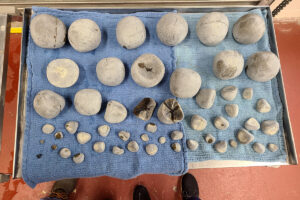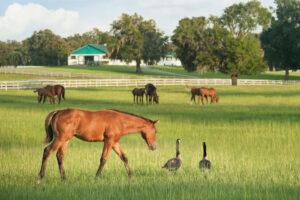Slimming Down
- Topics: Article, Body Condition
In this age of plenty it is not uncommon to see horses carrying too much body fat. Such an individual exceeds what we might call pleasingly plump; in other words, he is fat. When running your hands across the horse’s sides, you won’t feel any ribs beneath his flesh. Often a fat horse has developed a cresty neck, and if you can stand on a fence rail and peer down on him from above, an overweight horse might appear to have a "rain gutter" along his back. When the girth or cinch is tightened, it makes a distinct dent in the underlying flab. Some might think such a horse is solid and in full "bloom," ready for the show season ahead. But such a body condition is dangerous to the health and athletic future of the horse.
Where to Start?
Philip Johnson, BVSc (Hons), MS, MRCVS, Dipl. ECEIM, professor of veterinary medicine and surgery at the University of Missouri, has explored hormonal aberrations that result from overfeeding, particularly as related to what he describes as equine metabolic syndrome (EMS). His recommendations to treat the problem of obesity are based on common sense and a healthy approach to dietary management. First, an owner must recognize that a horse is, in fact, overweight or obese. He urges, "To improve metabolic health, a philosophical shift is necessary. An acceptable and desirable body condition, as perceived by a horse owner, should be a horse that is fit and trim."
Johnson suggests using measurements with a weight tape and with body condition score (BCS) to evaluate how your horse measures up to ideal body weight. Then he urges owners to implement a sound nutritional program in consultation with a veterinarian
Create a free account with TheHorse.com to view this content.
TheHorse.com is home to thousands of free articles about horse health care. In order to access some of our exclusive free content, you must be signed into TheHorse.com.
Start your free account today!
Already have an account?
and continue reading.

Related Articles
Stay on top of the most recent Horse Health news with

















